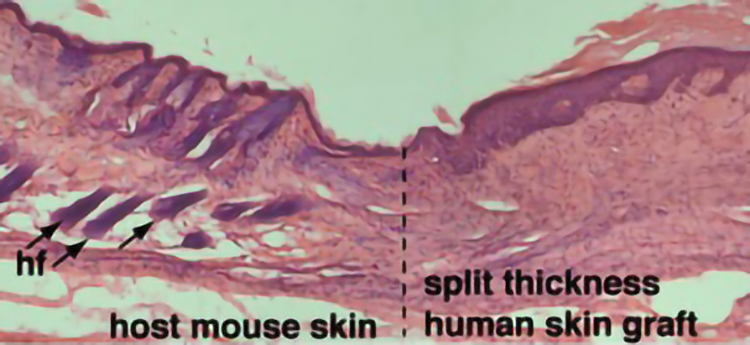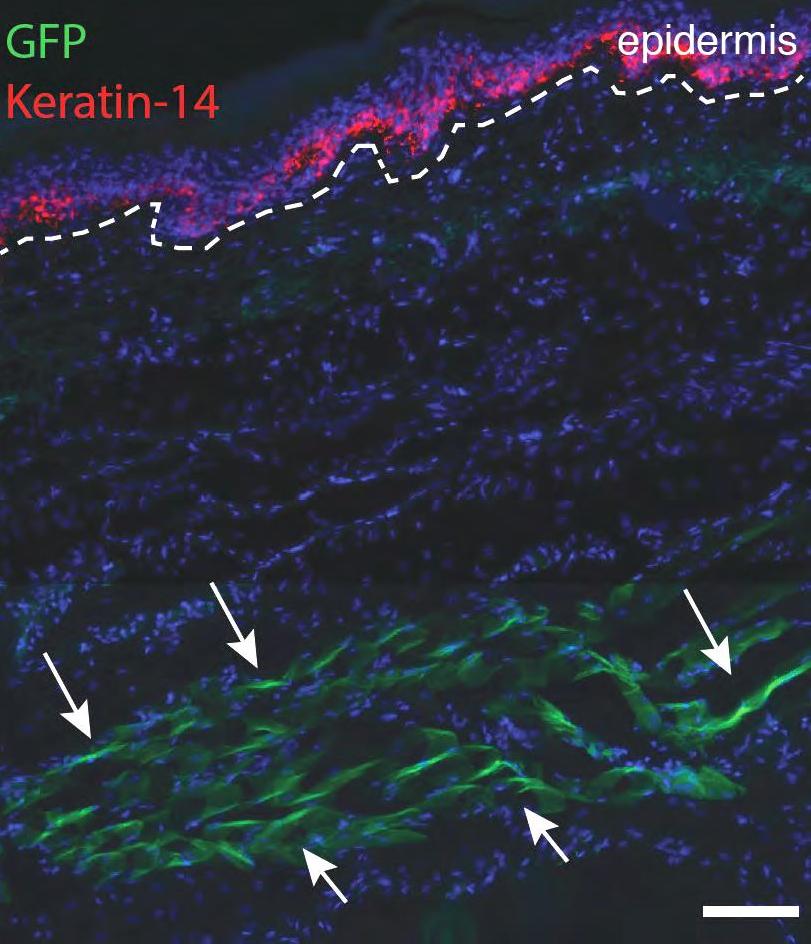Aim 1
Because dysfunction of STSG is due primarily to its lack of functional dermis, we hypothesize that transplantation of adult human dermal stem cells (SKPs) into the STSG will generate new dermal tissue within the graft and ultimately improve the resulting skin function.

To efficiently and permanently track the transplanted cells within the graft in vivo, we have developed high titre lentiviral vectors expressing green fluorescent protein or mCherry. Transplanted human dermal stem cells integrate into the graft and show excellent survival
Ongoing work and future directions of this Aim are:
-
Determine the fate of human dermal stem cells following transplant into a split thickness skin graft
-
Determine the impact of human dermal stem cells on split thickness skin graft outcomes
-
Determine the optimal timing for transplantation of human dermal stem cells into a split thickness skin graft
- Working to understand the biology of these cells and the signaling involved in regulating their behavior

In order to accurately and efficiently simulate human dermal stem cell transplantation into the split thickness skin graft, a human split thickness skin graft xenograft model was created in mice. These human split thickness xenografts on mice appear histologically identical to human split thickness skin graft biopsied from patients that have undergone a split thickness skin graft.
